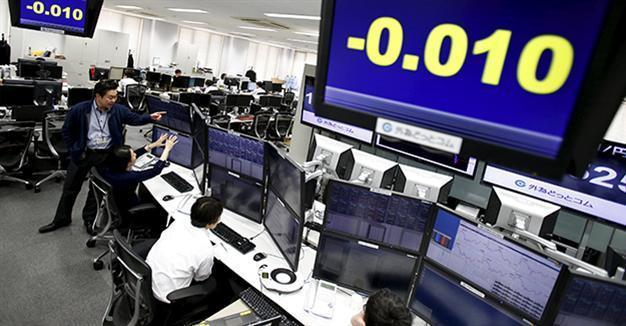Japan’s negative yield bond explained
TOKYO – Agence France-Presse

Employees of a foreign exchange trading company work under monitors displaying the 10-year Japanese government bond yield in Tokyo, Japan, February 9, 2016. REUTERS Photo
The yield on Japan’s benchmark 10-year government bond dipped below zero for the first time this week, offering the topsy-turvy promise of investors paying to lend someone money.Sovereign bonds are a way for governments to raise cash for their spending plans, promising lenders (investors) a guaranteed income - or yield - per year.
Like any other loan, borrowers usually have to pay interest on the money, and have to pay back the capital at the end of a fixed period.
Nearly all countries issue these bonds and - like other loans - the amount they pay generally depends on how risky lenders believe they are. If a lender thinks his money is very safe, he won’t charge much interest; conversely, if he’s worried the loan will go bad, he’ll charge a lot.
















